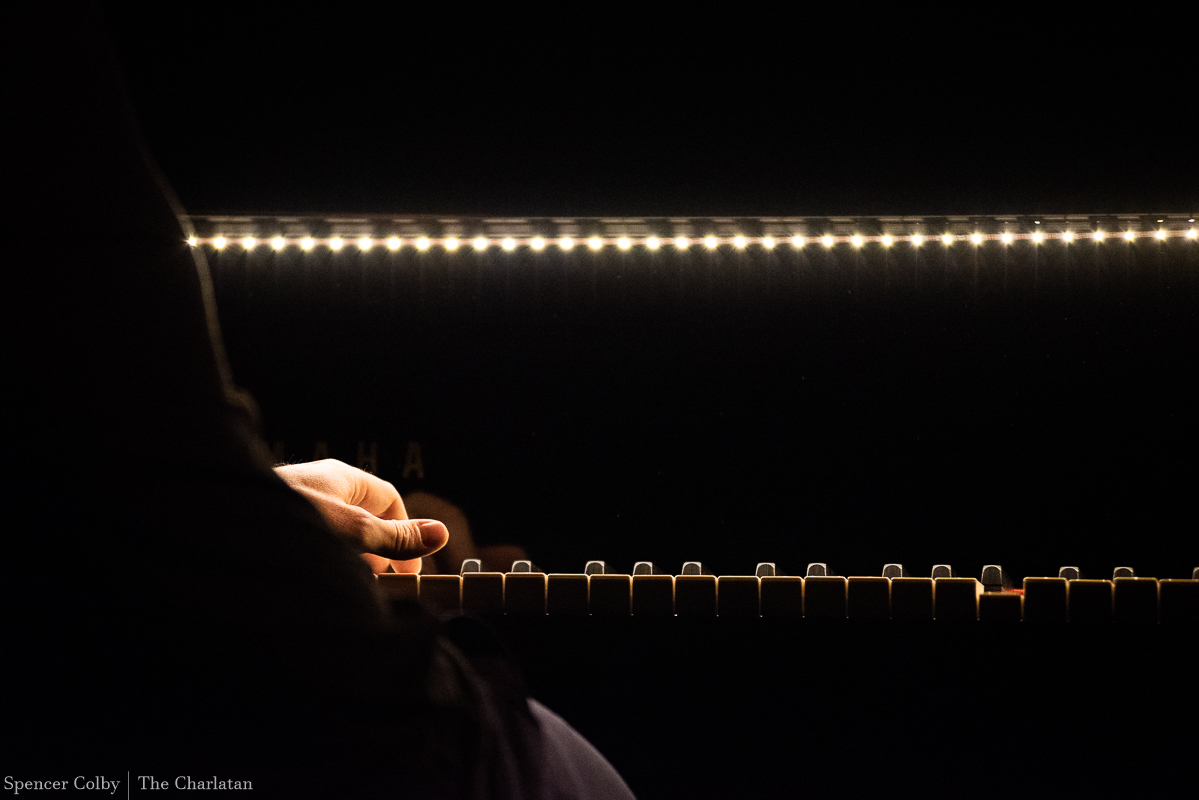The two-day TD Ottawa Jazz Festival October Concert Series wrapped up almost as quickly as it began. Those in attendance at the performances on Oct. 30 were treated to a night that ranged from jazz-funk to classical guitar and never once failed to sound fresh.
There was a small crowd at the Algonquin Commons Theatre when the lights dimmed and the night of jazz kicked off.
The Chuck Copenace Group, an Ojibway jazz artist from Winnipeg, was first on stage. Alone with his trumpet in hand, Copenace began his set reflecting on his struggles reconnecting with his Indigenous identity.
Copenace said much of his music is built around the melodies of Indigenous chants that he learned while spending time in sweat lodges. After feeling disconnected from Indigenous culture at a young age, Copenace said this time was spent trying to reconnect with the culture.
As his band joined him on stage, Copenace raised his trumpet to his lips and played the beginning verse of The Opening, inspired by the first song he learned in a sweat lodge.
Copenace’s trumpet mainly kept to Indigenous chant melodies at the beginning of the set, while the other band members laid down a groove reminiscent of ‘70s jazz fusion. The group then shifted into straight groove jazz with songs such as Front.
The group went on to showcase a variety of musical influences with Appetites, a jazzed-up take on the groove from N.W.A. ‘s Appetite for Destruction and a cover of Freddie Hubbard’s Little Sunflower which brought out a more traditional jazz sound.
Wah pedal guitar effects, groovy drum beats and basslines laid the foundation for the saxophone and trumpet to explore jazzy melodies throughout most of the set. However, Creator, the final song from the group of musicians, brought the music back to Copenace’s original Indigenous inspiration.
As the final notes were played, the sound of applause filled the theatre and half of the audience gave a standing ovation while the band left the stage. The theatre then filled with chatter as the first performance’s attendees left and ticket holders of the next performance trickled in.

Stevens’ first few songs featured a range of influences from folk to classical Brazilian guitar which he told the audience was the inspiration for the song, Buckets.
When Stevens’ solo set ended, New Orleans-based jazz drummer Joe Dyson and jazz bassist and producer Dezron Douglas joined Stevens on stage to perform as a trio for the remainder of the set. Despite the addition of two more musicians on stage, the feeling of intimacy remained.
The audience shifted in their seats and couples rested heads on their partners as more traditional jazz replaced Steven’s solo songs which had the attendees perfectly still, as if their movements might distract from his classical guitar and folk sounds.
As a trio, the musicians built each song up from a mellow beginning to a sound that made space for strong bass solos and tight drumming, which were prominent in their covers of Ornette Coleman’s W.R.U. and Charlie Haden’s First Song.
The set’s dynamic was reminiscent of a loose jam session as the trio took turns in the spotlight. The sound of applause echoed each musician’s solo and bled into the next.
The set ended with bass solos so crazy that Douglas was nearly hugging the bass to reach such high notes and Dyson’s short crashing drum solos, broken up occasionally by the two other musicians, concluded the set interwoven with the sound of the audience’s applause.
Following this high-energy finish, another night of live jazz came to an end, wrapping up a short but memorable two-day series that the few in attendance were lucky to witness.
Featured image by Spencer Colby.


![[Photo by Spencer Colby/Charlatan Newspaper]](https://charlatan.ca/wp-content/uploads/2021/11/a_JazzStock_Provided_web-3-of-4-696x464.jpg)



